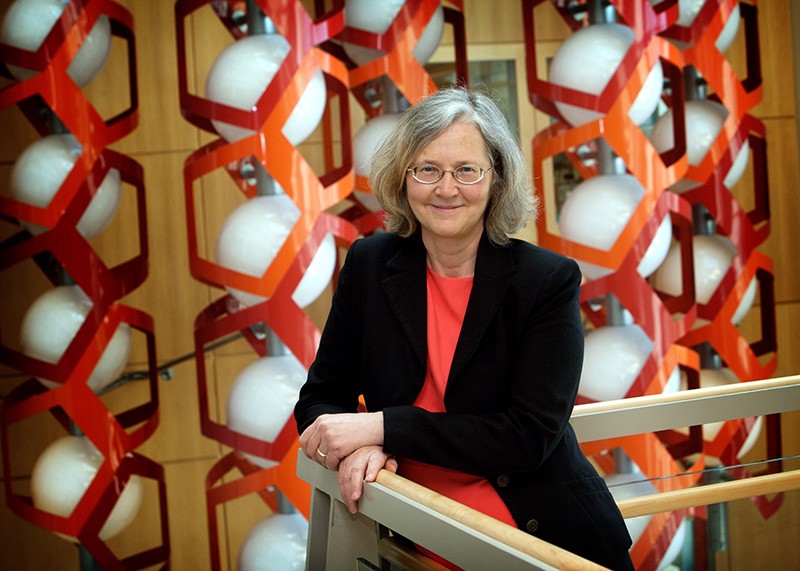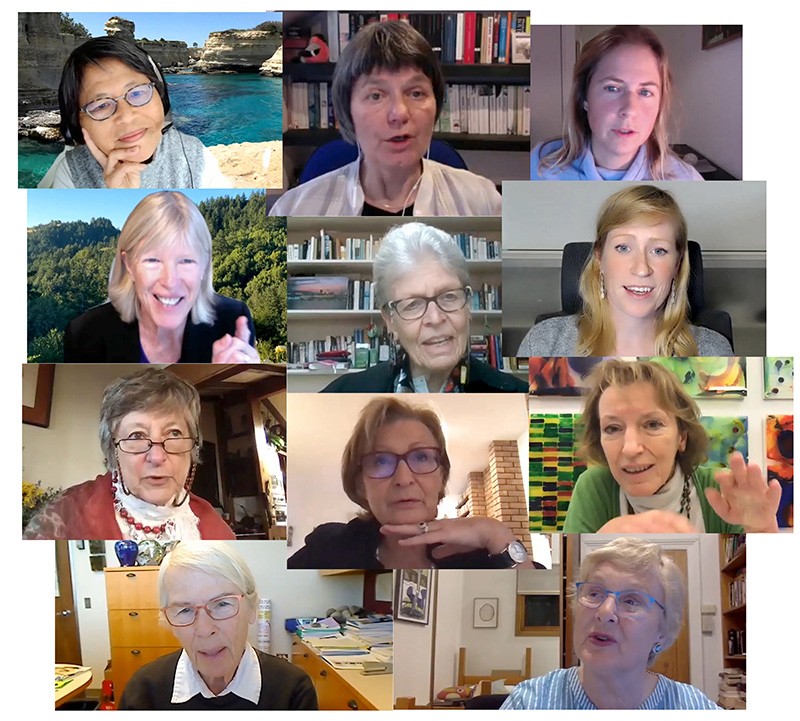Ahead of the Curve: Women scientists at the MRC Laboratory of Molecular Biology Kathleen Weston MRC LMB (2020)
In May 1986, PhD student Kathleen Weston headed the author list on a correspondence to Nature titled ‘Sexist ads’. The 46 signatories, half of them women, worked at the Medical Research Council’s Laboratory of Molecular Biology (LMB) in Cambridge, UK. They upbraided the journal for a series of adverts that portrayed “men (and in some cases animals) as serious-minded scientists, and women as dumb decorative objects” (K. Weston et al. Nature 321, 106; 1986).
Female researchers in many nations are now less likely to encounter assumptions that their profession is exclusively male. This is in part thanks to women such as the 635 who have passed through the LMB since it opened in 1962. In Ahead of the Curve, Weston spotlights some to ask: what are their recipes for success?
They are necessarily a select bunch. The LMB, a research institute with a headcount of more than 800 scientists and support personnel, claims 27 Nobel prizewinners among its staff and alumni. It has been a magnet for researchers looking to work at the forefront of structural biology, protein chemistry and cell biology. Weston found it “frightening” when she arrived in 1983, not because of sexism but because it “discriminated against mediocrity”. Her book is based on interviews with women who thrived in this high-pressure environment and went on to become global leaders in their fields.
Nobel-prizewinning molecular biologist Elizabeth Blackburn puts her finger on the obvious question: “Was there some preselection going on, so that the women who went there would have succeeded one way or another anyway?” Probably, yes. They won their places on the basis of exceptional ability, showed determination in the face of setbacks and worked 15-hour days, 6 or 7 days a week. Cellular geneticist Sarah Teichmann remembers working “all the time, even on Christmas Eve and Christmas day” as an undergraduate because she “had nothing to calibrate myself against”.
Their passion for science trumped everything. “There was a freewheeling approach at the LMB that you could just tackle anything fearlessly, and that was fantastic and very helpful,” says immunologist Philippa Marrack, a PhD student there from 1968 to 1971.
Credit where it’s due
Molecular biophysicist Joan Steitz faced overt obstacles early in her career in the United States, such as being turned down for a PhD because she was a woman, so starting her postdoc at the LMB in 1967 was a revelation. “There was constant discussion about science,” she says, and “everyone was expected to interact on a par with people like Max” (Perutz, Nobel-prizewinning chair of the LMB). Learning RNA sequencing from a pioneer of the technique, divisional head Frederick Sanger, Steitz made key discoveries in gene expression and in 1969 became the first woman to speak at the annual week of lab talks. “In some places you wouldn’t get acknowledged for what you’d done but that was never the case at the LMB,” she says.
She is one of several women featured in the book who made career choices to fit in with their partners’ movements, yet flourished. Molecular biologist Daniela Rhodes took a technician job at the LMB with biophysicist Aaron Klug because her husband was studying at Cambridge; she stayed on to do a PhD and, in 1987, became one of the first tenured female group leaders. Blackburn followed her husband to Yale University in New Haven, Connecticut, where she started her Nobel-prizewinning work on telomeres, repeating sequences that protect the ends of chromosomes from deterioration.
Cell biologists Mariann Bienz and Hugh Pelham bonded over heat-shock proteins when she was an LMB postdoc and he a newly minted group leader. She later took a 40% salary cut to return from an assistant professorship in Zurich, Switzerland, to a group-leader position at the LMB, partly so that she, Pelham and their children could live together. Her output “took a dip” when her children were small, she says, but she became head of the cell-biology division in 2007 and is now deputy director of the LMB.
These women’s scientific questions range widely. Molecular biologist Melina Schuh’s group was the first to capture developing human eggs with high-resolution microscopy, working in partnership with a Cambridgeshire in vitro fertilization clinic. Teichmann went for big-picture bioinformatics, spending her PhD at the LMB “hunched over a computer”, classifying protein structures.
But their anecdotes point to similarities in the ways they run labs. For instance, Teichmann’s experience of the “open-minded, pleasant and democratic management style” of structural biologist Janet Thornton’s lab at University College London, where she was a postdoc, influenced how she does things.
Equalize the pipeline
Weston gave up research to become a science writer a decade ago. Her account is lively, but embedded as it is in the history of molecular biology as practised at the LMB and beyond, it occasionally loses sight of the human stories in enthusiasm for the technical details. Only a subset of readers will stay with blow-by-blow accounts of clathrin-coated vesicles or the role of hypermutation in antibody diversity.
At the LMB today, women comprise half the PhD students and postdocs, but only around one-quarter of group leaders. Bienz is the only woman in nearly 60 years to have headed one of the four divisions. Women’s lack of progression is a universal problem, so focusing on the success stories might seem to dodge the issue. Yet Weston shows that the LMB high-flyers faced many of the setbacks that make academia a ‘leaky pipeline’ for women: a lack of role models, the need to balance work and family, unconscious bias in appointments, impostor syndrome and salary disparities. Weston does not comment, however, on the fact that most of her interviewees came from well-educated and economically advantaged backgrounds, and all of them are white.
What is clear is that science is richer because these women kept going. They now mentor female colleagues and lobby their institutions for more family-friendly practices. Weston wryly suggests that rather than fretting when women find a rewarding alternative career, as she did, academia should present it as a positive option for men, too. “Perhaps what is required is more support for excellent women, combined with a leakier pipeline for less good men,” she concludes.
"share" - Google News
December 15, 2020 at 05:31PM
https://ift.tt/2JXrDLn
Women of the Nobel factory share their stories - Nature.com
"share" - Google News
https://ift.tt/2VXQsKd
https://ift.tt/3d2Wjnc
Bagikan Berita Ini


















0 Response to "Women of the Nobel factory share their stories - Nature.com"
Post a Comment